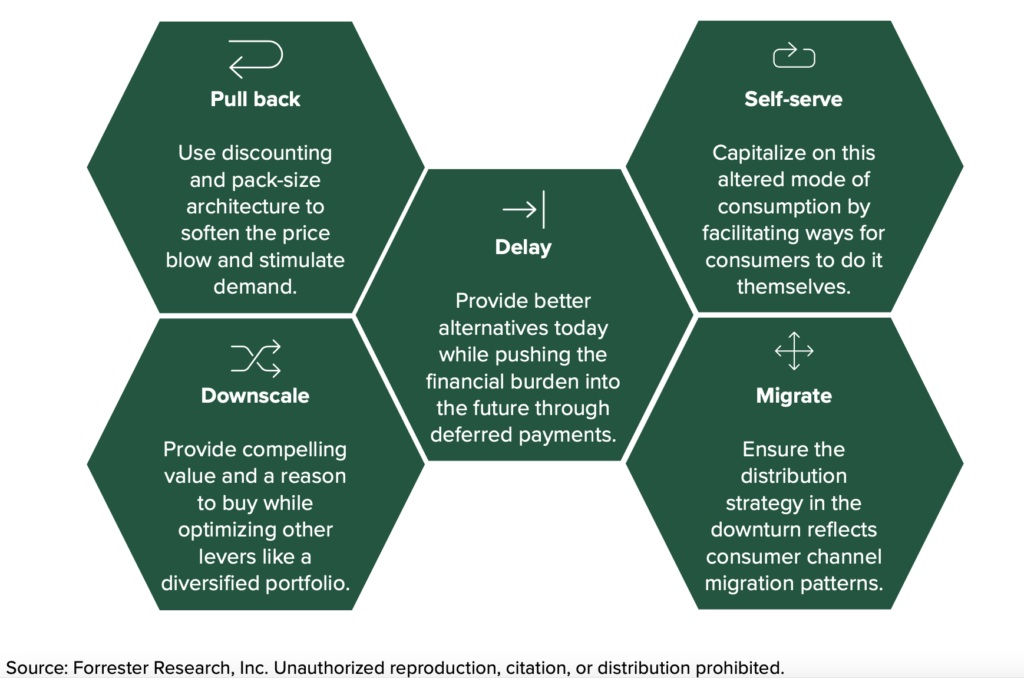Running Twice As Smart: A CMO Growth Primer For An Economic Downturn
It takes all the running you can do to keep in the same place. If you want to get somewhere else, you must run at least twice as fast as that!
— “Alice in Wonderland”
Run Twice As Smart
We sit in the penumbra of a pandemic, on the cusp of a recession. In these trying times, the Red Queen’s advice to Alice couldn’t be more apt for today’s CEOs and CMOs: “It takes all the running you can do to keep in the same place. If you want to get somewhere else, you must run at least twice as fast as that!” Inflation is surging, and a pall of consumer gloom has descended upon many brands, shrinking demand and revenue. Other brands have found temporary revenue reprieve with price hikes but are waiting for the other shoe to drop as consumers begin to balk at higher prices. CMOs need to run not just twice as fast but twice as smart to manage growth in this complex consumer environment.
To help CMOs craft this smart growth agenda, we dug deep into how companies such as Kraft Heinz, Target, P&G, Ford, Bank of America, Diageo, and others have combated downturns from the early ‘80s through the Great Recession. And we brought to bear wisdom from a group of Forrester analysts and experts who’ve seen this play out many times before in retail, consumer packaged goods, financial services, and other industries. The result: a primer for CMOs and other business leaders responsible for growing revenue and managing profitability, Manage Growth In An Economic Downturn, our newly published Forrester report.
Activate Marketing Levers In Response To Five Scenarios
In our research and interviews, we identified the five most likely consumer behaviors that a brand will be subject to during downturns (see the figure below). A smart growth strategy counters whichever of these behaviors are prevalent by activating both offensive and defensive levers. A defensive strategy safeguards revenue by pulling marketing levers such as price, product, packaging, promotions, and positioning. An offensive strategy detects the opportunities created by the changing environment and then disrupts the market to grow.

Build A Brand For Long-Term Growth
Short-term marketing strategies can plug a leak or spark some growth. But to create sustained long-term value, reactive pulls of marketing levers must be complemented with persistent brand building. To build a long-term brand that accommodates this downturn and looks beyond this downturn, companies must:
- Relentlessly demonstrate value. There’s more to value than affordability. Make your brand worth more by focusing on four value dimensions: economic, functional, experiential, and symbolic.
- Be useful to customers. You’ve heard it before: Be empathetic in your communications. But what you really want to do first is be useful in your brand experiences — then you’ll have something to communicate with empathy.
- Price strategically. If knocking down prices to drive volume seems tempting, look before you leap; discounts can tarnish brand equity, be hard to undo, and reduce revenue if demand is inelastic.
- Stay hungry. One brand’s peril is another’s opportunity. Recessions depress assets and make M&A activity compelling. Organic growth opportunities abound for the bold. This may well be the best opportunity for measured and strategic investment in growth that we’ll see for a while.
Forrester clients can access the report here. Please request a guidance session if you have questions about this research or want to explore how your company can better manage growth.
